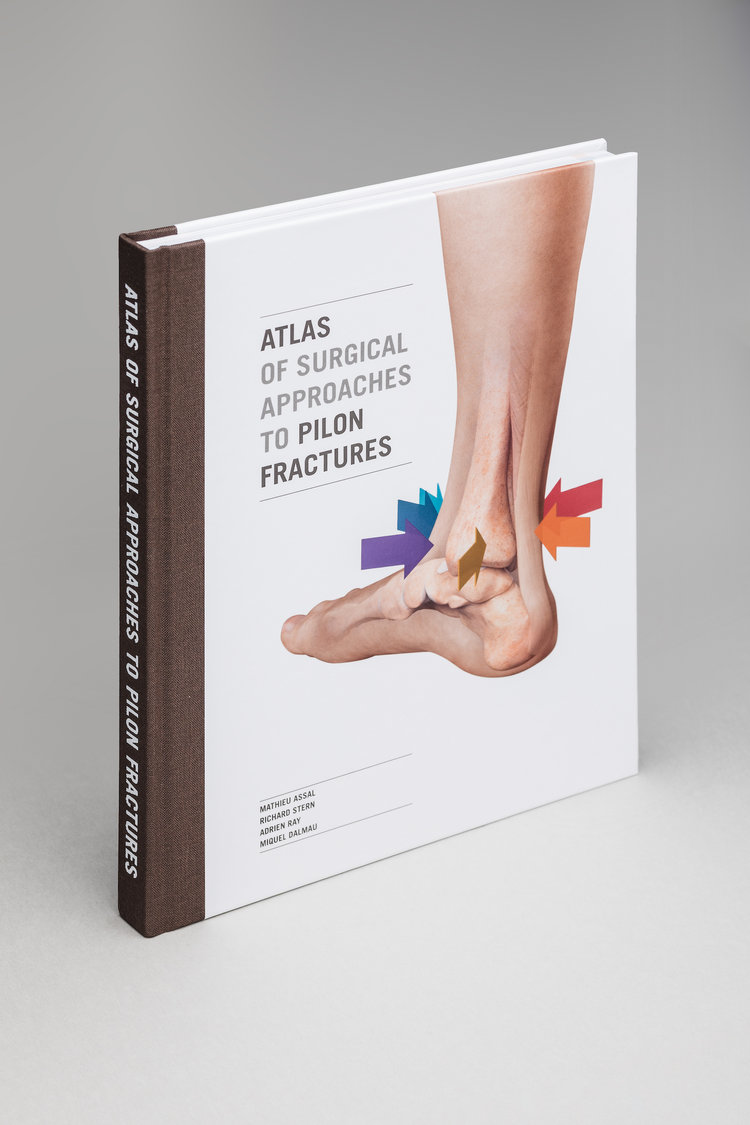
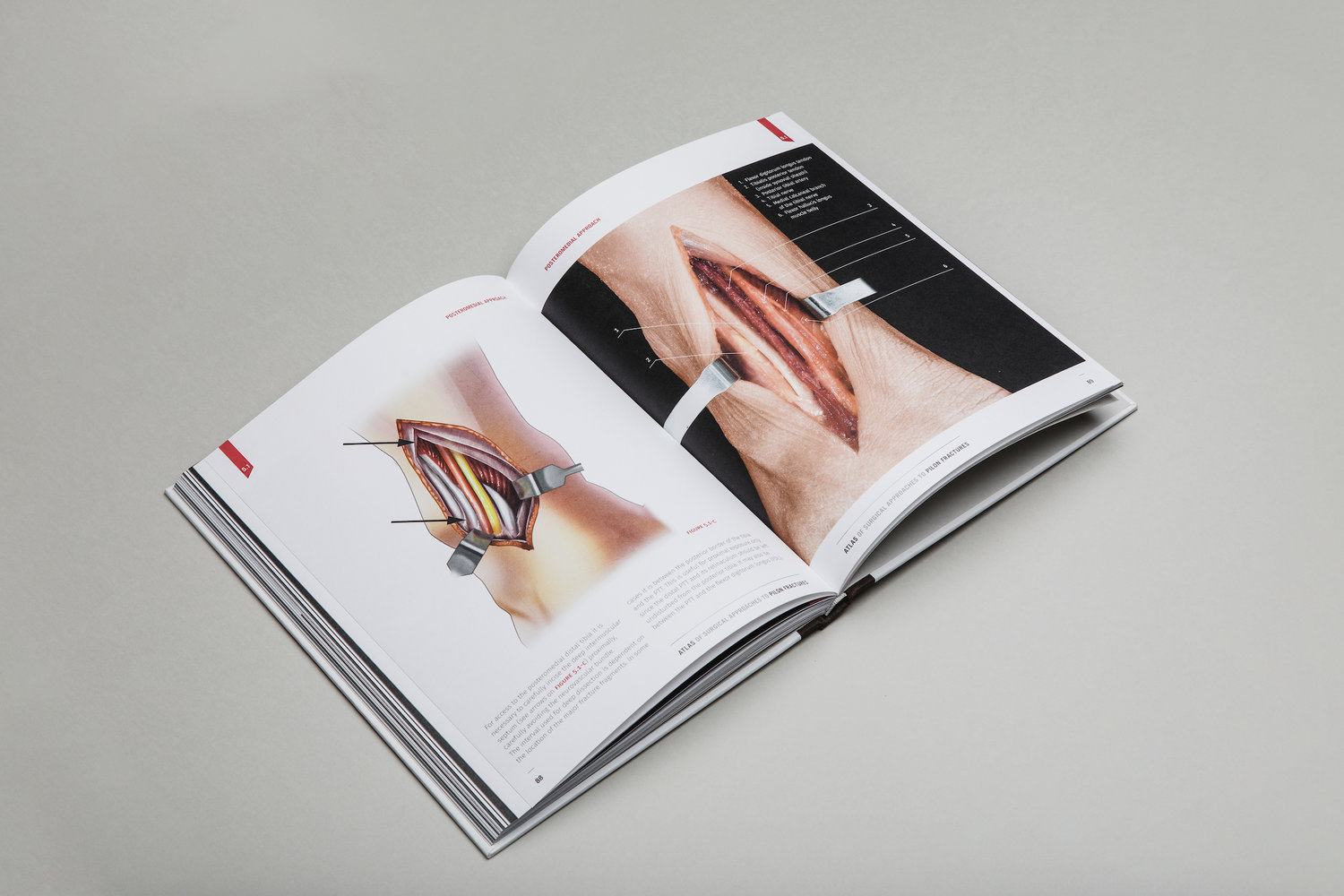
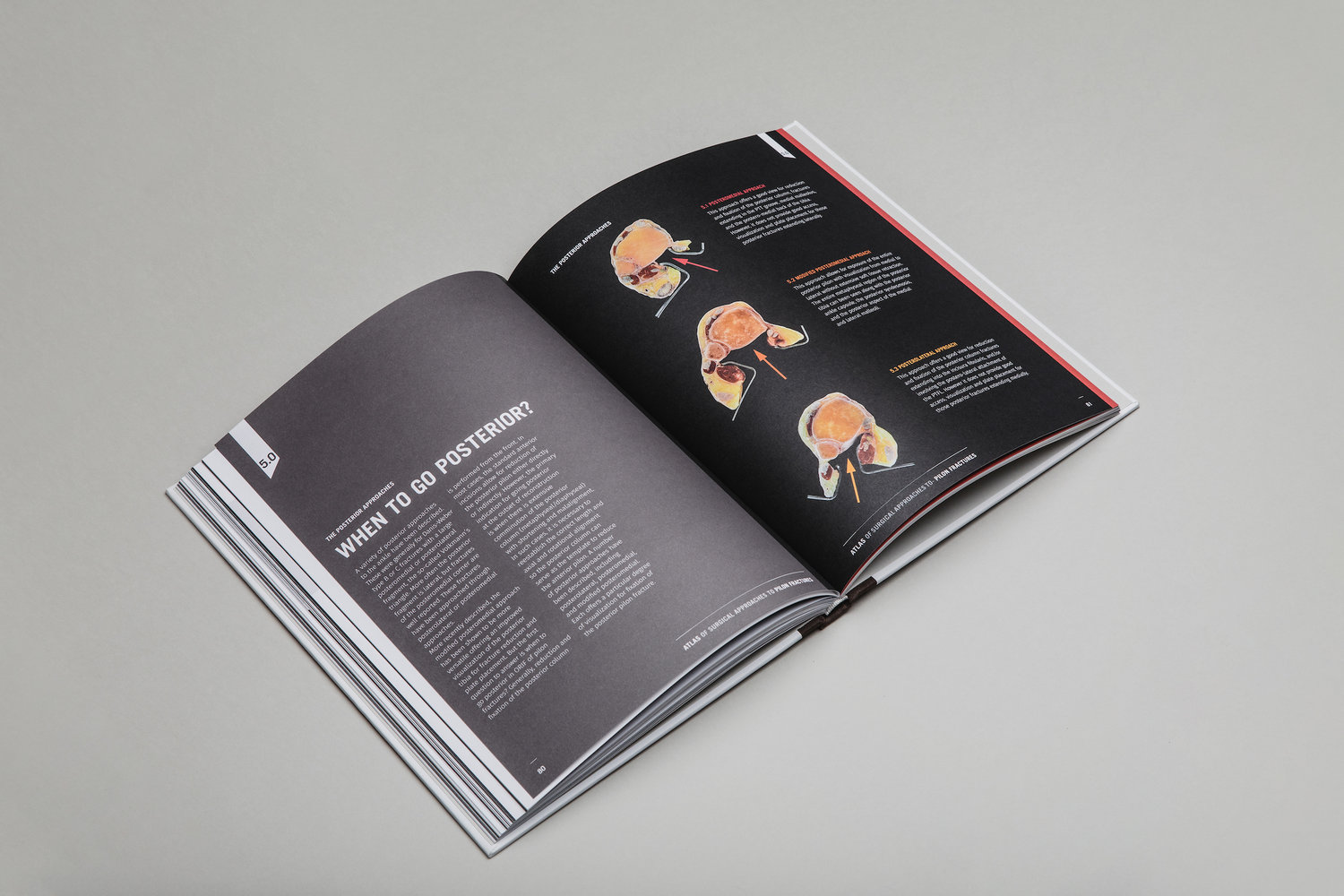
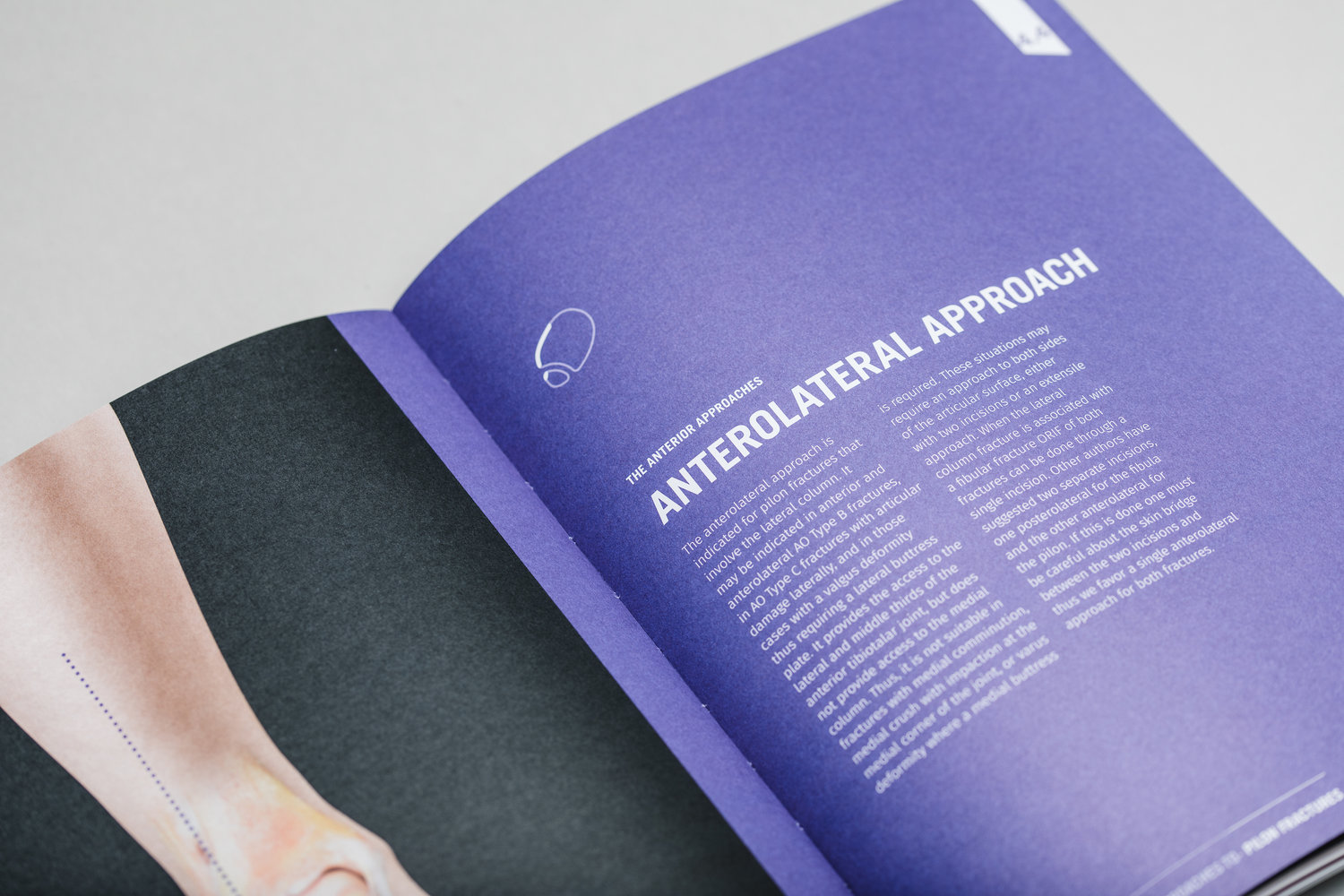
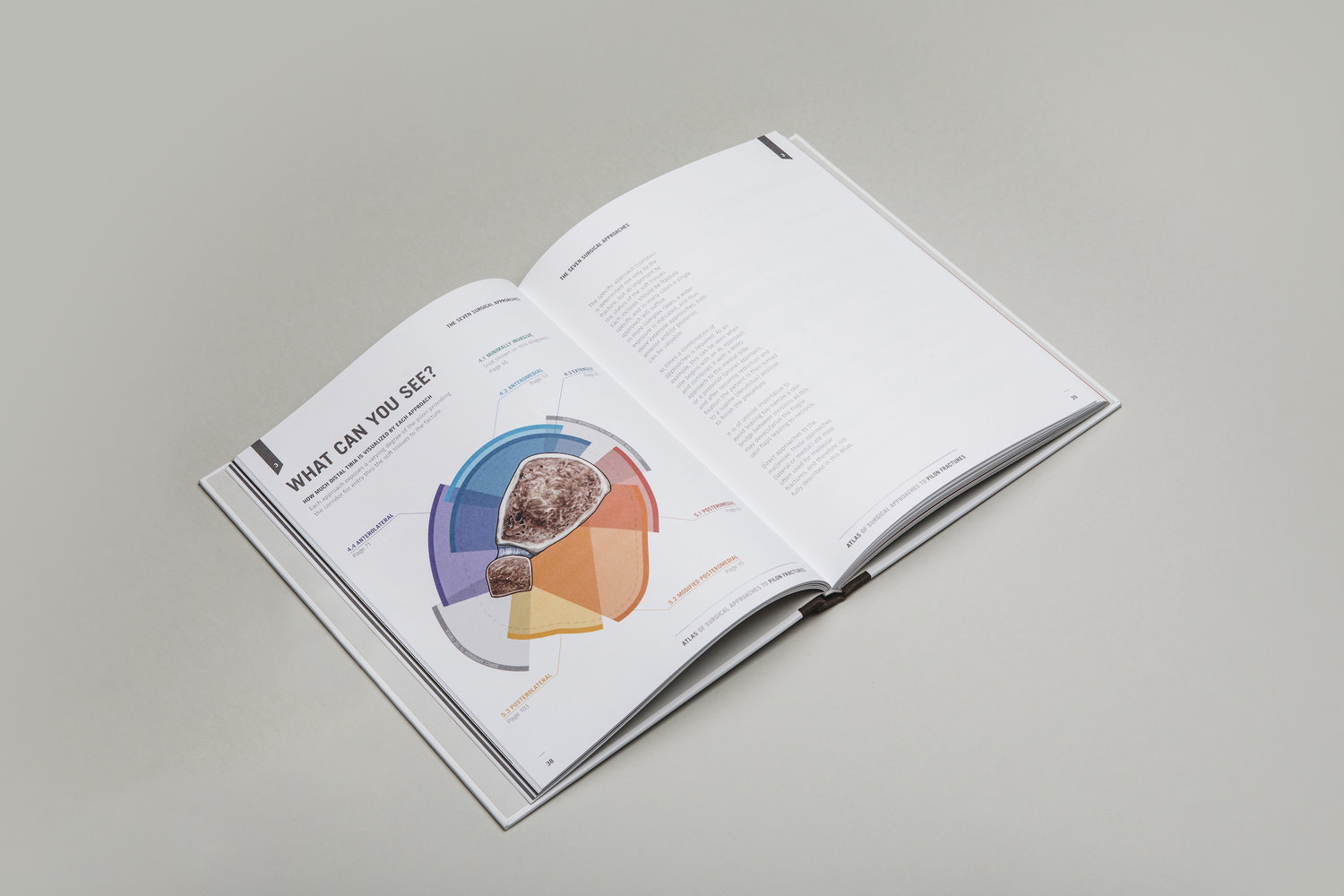
Just another WordPress site





Author: Adrien Ray
Hallux valgus, also known as bunion is a complex deformity whose origin is not yet fully understood. Bone architecture, genetic character, hyperlaxity and many other factors are recognized as contributing to its development. To date, however, no study has proven the role of high heels in the genesis of this pathology. However. by causing a displacement of the center of gravity previously, they increase the symptomatology and the pains, as the narrowness of these shoes. They therefore represent an aggravating factor in a context of hallux valgus already installed.
The surgical treatment of bunions has shown a great evolution since about twenty years. At the time, surgery was often complicated by recurrence, pain or development of other problems then little understood. Caution was necessary and patients were advised to wait until the symptoms were well advanced to discuss a correction. Currently, hallux valgus pathology is better understood, surgical bunion corrections are controlled and it is advisable to consult as soon as the discomfort or pain is established. It is also known that other problems, such as osteoarthritis, may arise if the deformity is left for years without correction.
If you ask a woman who has had a bunion (hallux valgus) surgery 20 years ago, there is a good chance she describes the experience as a real trauma, often compared to the pain of childbirth! Again, this vision is not at all short today. With the development of surgical and anesthetic techniques, micro-invasive surgery or improvement in follow-up, pain is clearly no longer a problem. Naturally, each person perceives the pain differently, but it is transitory, well managed by the drugs and one quickly describes a discomfort more than a true pain.
How many time did I heard this? FAKE NEWS!! There is currently NO technique of laser correction of bunions. Minimally invasive surgery, or percutaneous, allows to perform this surgery with one or more incisions of one millimeter. However, the bone movements made by these incisions are made by milling cutters at high speed and absolutely not laser.
Recurrence is indeed the main complication of bunion correction. Nevertheless, scientific literature and studies show a 7% recurrence rate which means a 93% chance of permanent correction. Of course, this rate may be modified by the severity of the deformity to correct, the surgical procedure quality, or other very technical issues. Still, a well chosen and performed correction leads to a long standing correction.
To know more about hallux valgus and bunions …
Or micro-invasive(percutaneous) foot surgery…
Author: Dr. Adrien Ray
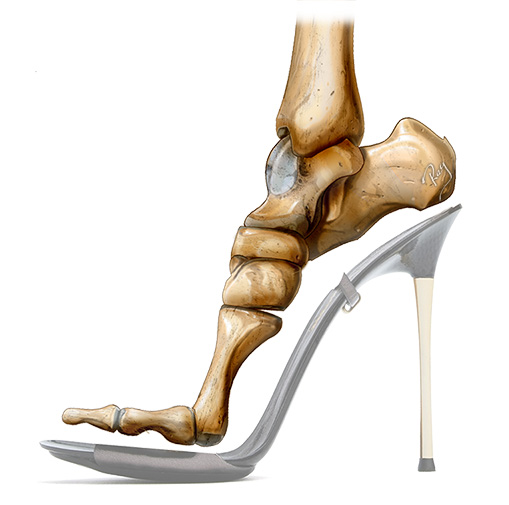
This type of footwear causes countless foot pain, ranging from ankle sprains stress fractures.
Poster Conflict
In order to stabilize the foot, these shoes usually have a rigid reinforcement around the heel. In case of boot too small, the support is increased and in case of shoes too big, friction can take place. This hyper-pressure causes blisters, oedema and sometimes achilles tendon or heel pain .
Wrong foot position
High heels induce a forward movement of the body weight and a very large overload of the entire forefoot area. This hyper-pressure causes inflammation of the bone structures (metatarsalgia) or nerves (Morton’s Syndrome) that make it up. Be particularly careful with women suffering from hallucopia (hallux valgus) because these shoes greatly increase the symptomatology.
Tips
Make sure to wear the right size and do not hesitate to protect your skin in case of cutaneous involvement. The height of the heel should remain reasonable and generally describes 5cm as the ideal height for a foot. Check the cushioning capabilities of the front of the shoes before you buy them and do not fall for shoes that are unsuitable for your feet.
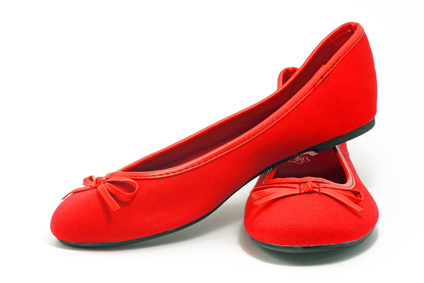
Trendy companion on sunny days, the ballerina does not pose a problem with the heel. It is still an important source of potential pain and puts your feet to the test.
The lack of arch support and the flexibility of the insoles induce extremely high tensions in the tendon structures and force your muscles to work accordingly. Knee or back pain may occur and the most common pathology is inflammation of the heel or plantar ligaments, also called plantar fasciitis. Redoubtable by the intensity of her pain, she can be particularly difficult treatment.
Tips
If you only swear by your ballerinas for this summer, invest in a pair of soles, ideally made to measure. Heel cushioning and arch support will allow the heel to rest and reduce the risk of serious injury. Be especially careful if you have flat feet, osteoarthritis of the big toe or plantar fasciitis because the ballerinas will only increase the symptomatology.
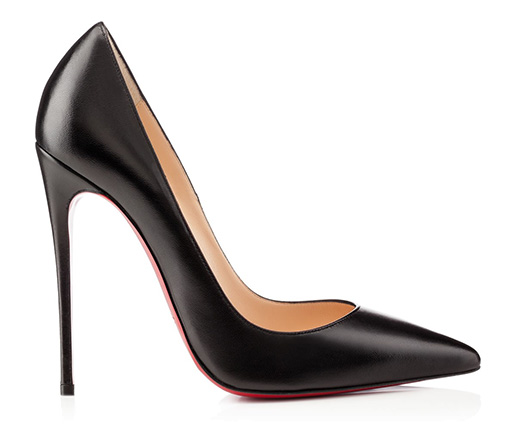
Remember that a significant part of the body weight is supported by the heel. The contact surface with the ground is then important to ensure correct support. Beyond their height, the finesse of these heels thus entails a major risk of ankle sprains because these shoes are mechanically very unstable. Any woman wearing this type of shoe knows perfectly well the feeling of imminent derailing when the heel slips on a pavement or in case of rain.
Tips
If you suffer from chronic ankle instability, limit the height of your heels or prefer heels with wider support.
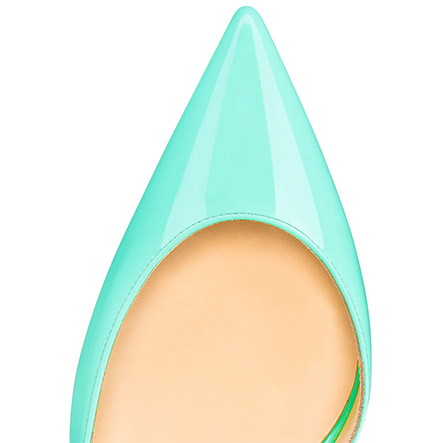
Flats or heels, pointed front shoes are the worst enemies of your toes. Forced into a narrow space, they are permanently compressed and the slightest of their deformations will invariably cause pain. Suffering women onions (or hallux valgus) , small toe deformities or lateral edge of the foot , are particularly prone to these lesions.
Tips
Know how to recognize inappropriate shoes at your feet. If you already suffer from toe deformities, preferably choose wide, round or square front shoes that will fit your morphology much better. Also, be careful not to take too small shoes that will only amplify the problem.
Fashionista, a hard-working sportsman or a great traveller, your feet are often abused by your shoes. Beyond wanting to discard all shoes that are unsuitable for your feet and harmful to your health, it is important to know your morphology and its weaknesses. Each foot is different and supports more or less stress related to our activity or our clothing. Know alternate types of shoes to allow your body to rest, adapt your shoes to your weaknesses and never crack for the purchase of an uncomfortable shoe or too small. It’s often better to have a crush than to suffer in the long run from an unfortunate choice.
Be reasonable if you want to wear a variety of different shoes for a long time. Finally, do not hesitate to consult a specialist in case of persistent pain.
In the same area: How to choose your sports shoes
Why is football so hard for the foot and ankle? Although the question is simple, the answer is no less complex. There are a multitude of specific points that add up and create favorable conditions for trauma and pain in the ankle. Just follow a match and players to understand the source of these foot injuries. Football is a sport where accelerations must be explosive, the wearing of crampons entails major constraints by blocking the foot relative to the rest of the body, hyperflexions and hyperextensions of the ankle hurt the joint, direct contact (tack, etc. ..) can be very violent … In short, the sources of trauma are legion and any self-respecting footballer suffered, sooner or later, problems of his lower limbs.
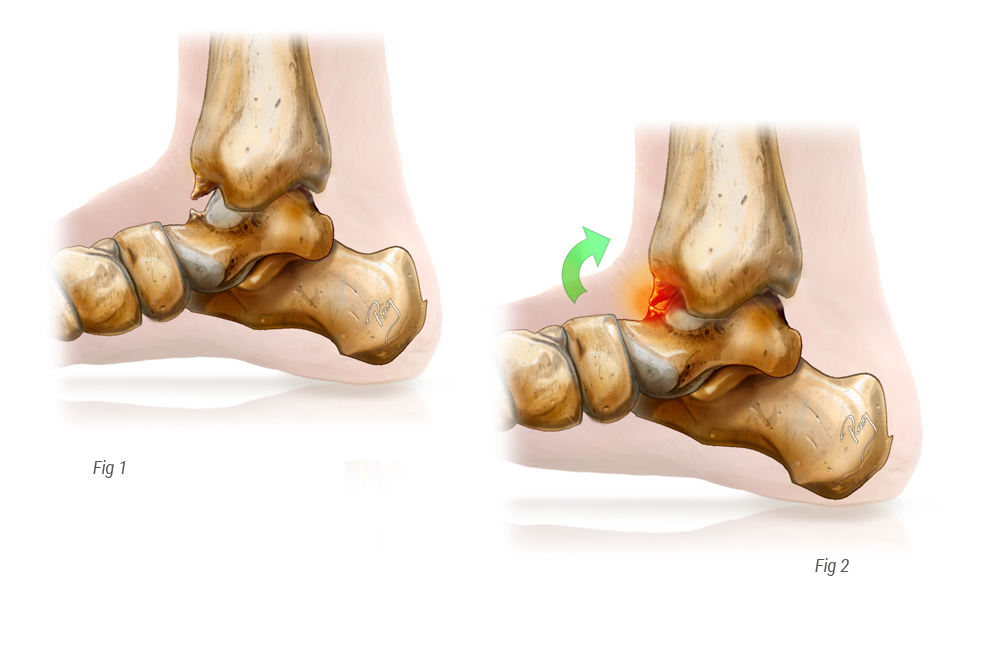
The articular conflict is defined by a mechanical blockage of a joint. The causes are numerous but one generally finds bone growths or fibrous scars on both sides of the joint. When the ankle is flexed or extended, these growths come into contact with each other, blocking the movement and causing pain (see image above).
Scientific studies have shown that forced movements, for example when striking a balloon, impose a violent impact between the bones of the ankle. This leads to microlesions of the bone and bleeding (hematoma) which, although painless, end with years of calcification. It is also quite simple to recognize a young footballer only by looking at his ankle x-rays which often show the development of these growths, also called osteophytes.
Ligament lesions (sprains, for example) can also cause blockage, creating a mass of fibrous tissue in the ankle. It is usually located on the lateral edge of the ankle, with a very specific painful area.
Although these growths are generally asymptomatic, it is sometimes necessary to operate them in case of persistent pain or blockages. The development of ankle arthroscopy has been a real revolution in the understanding and treatment of these lesions.
For more information, find our specific page on ankle conflicts.
It is impossible to talk about the trauma of the footballer without looking specifically at ankle sprains .
The design of football boots is clearly one of the main risk factors for ankle pain. Running with crampons is obviously mandatory on a football field, otherwise the list of trauma would certainly be twice as long! However, the specific moment when the crampons are planted in the ground is a particularly dangerous moment. At this precise moment, the foot is fixed in one position while all the rest of the body is moving. It is then enough that the movement is modified to cause extreme forces at the articular level. It is usually at this time that ligamentous lesions of the knee, ankle sprains, or fractures occur. There are other important risk factors such as a lower extremity axis defect, ligament laxity, a hollow foot, etc.
Ankle sprain is an injury to the ligaments stabilizing the bones. Distended, torn or broken, they can no longer play their role and make the ankle unstable or painful chronically . It is important to train the muscles of your ankle well and perform regular balance exercises (proprioception) to reduce the risk of sprains or ankle pain. Also make sure of the maintenance and choice of your football boots see the addition of custom soles.
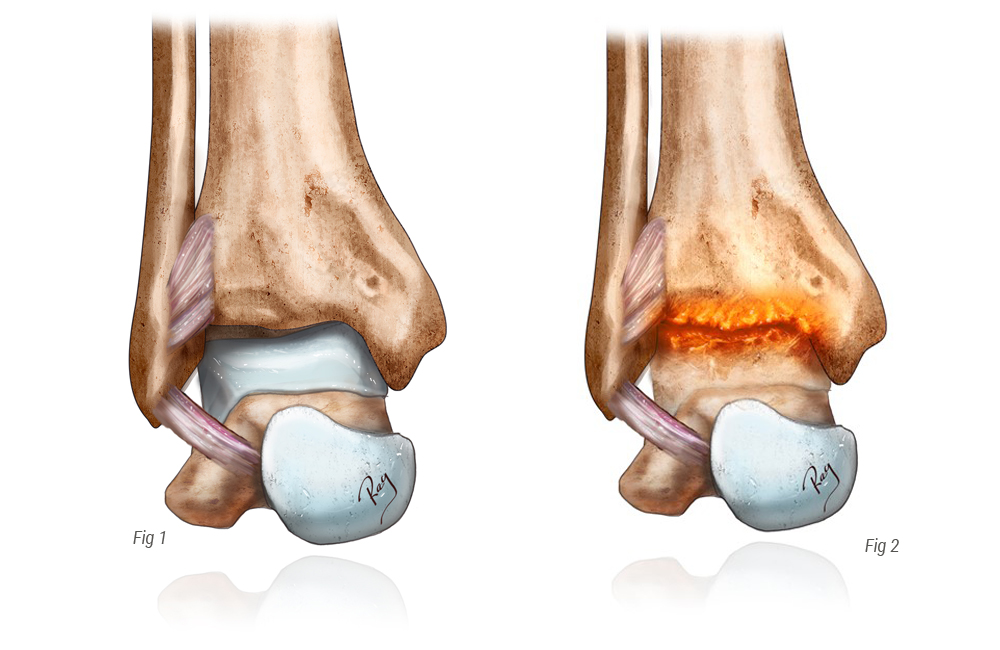
This is a common question and concern for footballers, professionals or amateurs. Unlike other joints such as the hip or knee, ankle osteoarthritis is usually post-traumatic, that is, osteoarthritis develops in the aftermath of a major ankle injury, even an old one. Classically, an ankle, astragalus or tibia fracture is found in the history of patients with osteoarthritis. It has never been proven that hyper-use of the ankle, as for example in an elite athlete, was itself a source of osteoarthritis. It is obvious that the more an injured joint is used, the faster the damage is, but it is then necessary to present an underlying pathology.
It is known, however, that ankle instability is a common source of osteoarthritis. This particularity is often overlooked and neglected, but it seems very important to us to be aware of the subject.More than 80% of unstable ankles will develop osteoarthritis to a greater or lesser degree! It is therefore essential to follow optimal rehabilitation after a sprain, because many instabilities are due to insufficient treatment after the trauma. In the most advanced cases, it is sometimes necessary to resort to surgical stabilization which resolves the problem of instability and pain in the ankle permanently.
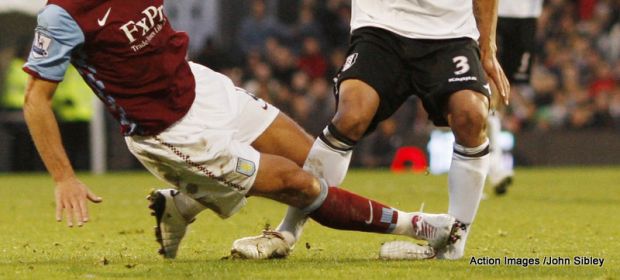
The tackles, best friends of a good defense in bottom of ground, are probably the worst enemies of the bone integrity of the footballer! The load, on a limb blocked on the ground by the crampons, leads to sometimes severe fractures and we all remember these impressive images of fractures during televised matches. The most common bones are the tibia, fibula and metatarsals, but there is a long list of possible fractures. Remember if pain related to sports trauma struggling to decrease.
There is, of course, no real way to protect you from this type of trauma because it is usually the opponent who causes the injury. Nevertheless, be careful and remember that a fall is often much less damaging than a tackle on a blocked leg. If you have been victim of such a trauma and have trouble getting in because of pain in your ankle. It is very likely that you suffer from a fracture. In this case, go to an emergency department for X-rays and a specialized examination.
Author: Dr. Adrien Ray
Plantar fasciitis, sometimes called Lenoir’s thorn, is the main cause of talagias (heel pain) and represents 11-15% of specialized consultations. It corresponds to an attack of the plantar fascia (for more information, read our article … ). This fascia is a long fibrous structure, connecting the heel to the toes. The term Lenoir’s thorn is often used when referring to the injuries of athletes such as basketball players, distance runners or footballers. It usually presents as acute pain, very debilitating, increased by activity and particularly pronounced when waking up. The main risk is the chronization and therefore the installation of these pains on a daily basis. Although the existence of this pathology has been democratized, its origin remains poorly understood. The scientific community agrees to recognize multiple causes, related to many factors such as age, weight or heavy work. The consensus ends there, and the discussions remain passionate about its true nature.
When you find the suffix -ite at the end of a word, it corresponds to an inflammation. Conjunctivitis (conjunctiva), tendinitis (tendon) or sinusitis (sinus) are classic examples. The word fasciitis means “inflammation of a fascia”. This pathology has long been considered as such and described as a cascade of inflammatory phenomena due to local stress. However, it is difficult to explain that this “inflammation” does not resorb after a few days of rest, like most acute inflammations. Biopsies have been made on this structure and show little inflammation. Plantar fasciitis is not an inflammatory disease. We must then turn to a degenerative process.
Studies of Achilles tendon or other tendons have led to a better understanding of the phenomenon responsible for fasciitis. Repeated shocks cause microcracks or tears in the tendinous structures. It is then a delicate balance between the occurrence of these traumas and the ability of the body to heal. As long as the balance is preserved, the foot is painless. When the balance tilts in favor of the traumas, one notes a degeneration of the tissue concerned, a progressive destruction which can lead to a complete rupture and the calcification of the lesions (hence the appearance of a bone spine). Fasciitis is therefore a degenerative and non-inflammatory pathology.
The most exciting discussions about plantar fasciitis or Lenoir’s spine are currently focused on the role of the Achilles tendon. The latter is formed by the confluence of two calf muscles: the gastrocnemius and the soleus. These two muscles, very powerful, allow the flexion of the ankle. When the gastrocnemius is too short or too tense (short gastrocnemius syndrome), it leads to a cascade of retractions and in particular that of the plantar fascia. It is therefore intimately linked to the calf by a complex of structure called gastro-calcaneo-plantar system, so dear to the Spanish surgical school. Short gastrocnemius syndrome is common and seems to be responsible for a considerable number of foot pathologies. The DiGiovanni team showed in 2009 that 85% of patients with plantar fasciitis have a calf muscle retraction. These findings show that this very common pathology is perhaps the tip of a much more complex iceberg and that more extensive management should be offered to patients, focusing not only on the fascia, but also on the rest of musculature and statics. To learn more about plantar fasciitis …
Author: Dr. Adrien Ray
We can not stress this point enough. Choosing the right shoe for the right foot is a job. Being at the top of the design is good, do not have to stop his season because of an avoidable injury, it’s better! Each foot is different and requires a suitable footwear. Some brands, for example, are perfectly suited to a fine foot, while others will work much better with a wider foot. Pronator foot, supinator, slider, … there is a terminology sometimes difficult to understand for the neophyte and proposed corrections depend not only on the shape of the foot but also the style of race.
Equip yourself with your usual socks, make an appointment in a specialized store and let you advise according to your goals and your morphology.
Of course, if you notice the development of pain under the forefoot or under the heel, it is advisable to consult a specialist doctor.
We usually group sports shoes in 4 categories: running, fitness, walking and specific.
So select your shoes according to their function.
If you play 3 or more times a week, plan to buy a pair of specialized shoes. They have been specially designed to ensure maximum safety in this specific type of activity.
As technical as a shoe, it will bring only discomfort see injuries if it is not perfectly adapted.
You must feel comfortable as soon as you try your new pair of shoes. Unlike city shoes, do not tell yourself that your sneakers will gradually adapt to your foot. They are designed to be immediately portable without pain.
You must feel a good hold of your heel in the shoe. A stub that is not stabilized is often synonymous with future injuries.
The problem is even more obvious if you suffer from deformities of the foot like a hallux valgus (also called onion) or hammertoe . The inflammations of the insertion of the Achilles tendon, marked by a bump on the back of the heel, also represent a pathology imposing a strict footwear.
Many sports foot problems can be offset by warming up, stretching or changing shoes. Yet you have chosen a suitable and comfortable shoe, but after several races will feel new pain in the knee or foot? Sometimes your foot requires a fine adjustment of the shoes to allow you to run safely. It is impossible for designers of sports shoes to predict every anatomical or biomechanical situation and they strive above all to adapt to as many people as possible.
Internal modifications such as customized soles or retro-capital supports, can be beneficial for the health of your foot. If you are a great runner, or suffer regularly from your feet, this is an option to consider. The additional cost will be largely offset by the profit.
Author: Dr. Adrien Ray
It depends primarily on the type of intervention chosen and the age of the patient.
In adults, the recorded rate of recidivism and 2 to 4% (Mann et al.). This is usually the risk encountered during a modern foot surgery where a cut in the bone is performed, moved, and then fixed to realign the big toe. This rate can rise up to 50% in surgeries where only excision of the hump has been performed. It is for this reason that the hallux valgus are practically systematically corrected by a bone cut, because the former surgeries, lighter, show disappointing results.
In adolescents, it can be elevated and, according to published studies, can range from 10 to 40%.It is often explained by a bad analysis of the cause of the deformation which is often different from the hallux valgus developed in the adult. Therefore, a 14-year-old girl is not necessarily treated as a 50-year-old woman.
Understanding the cause of the deformity is paramount in surgical planning. Each foot is different and there is no foot surgery correcting all hallux valgus . For a long time, the causes of these deformities were not really understood, which explains the high rate of recurrence in patients operated many years ago.
The anatomical scientific studies and the studies of operated patients made it possible to classify the hallux valgus according to their form, their degree and sometimes their causes. All possible surgeries (there are more than 200) are now specific to certain forms of hallux valgus and should only be offered under these conditions. For example, an elderly patient, simply suffering from a lump in a context of mild hallux valgus and osteoarthritis, is a very good candidate for a simple excision of the hump or for another light surgery. The consequences will be simple and the pains clearly diminished. The same surgery in a young patient could give good results for a few months, but the deformity progressing, it will appear 6 months later for a disabling recurrence. It is therefore necessary to offer him from the outset surgery a little heavier but definitive.
This is obviously the question that every patient and every surgeon asks himself. There is no exact answer and it depends on many factors. It is here the role of the surgeon to explain to the patient his problem, his cause if it exists, and the means to correct it. The personal experience of the operator is one of the key factors. Each surgeon must know several interventions to correct a hallux valgus and his personal experience will allow him to choose the appropriate gesture. There are many possible options for correcting a deformity and there is no exact consensus that such hallux valgus requires such intervention. It is necessary to know how to appreciate the age of the patient, his requests and goals as well as the type of deformation to offer the most specific gesture possible.
Above all, do not give up. Recidivism exists and does not mean that it is definitive. There is usually a way to correct them.
The first question to ask: Does this new distortion really bother me? Beyond the aesthetic character, a slight recurrence can be perfectly painless and in this case, it is better to think clearly about the need for a new intervention.
If the pain or discomfort reappears, it is advisable to consult a specialist. Changes in shoes or soles can sometimes be enough to significantly reduce the discomfort. As a last resort, surgery may be considered.
Foot surgery will depend on the deformity and its cause.
Recurrence is often noted if there is insufficient or inadequate correction during the first surgery.In this case, we will make a new correction, this time, sufficient.
Sometimes, only a small lump sign recurrence without deviation of the big toe. We can then discuss a simple excision of this hump, by open or percutaneous surgery.
Finally, some people unfortunately show significant damage to the joint accompanying this recurrence, and in this case the option of choice remains the arthrodesis, ie the final blockage of the joint.
In any case, it is important to understand that revision surgery is always more technically complex than first-line surgery.
To learn more about the treatment and causes of hallux valgus …